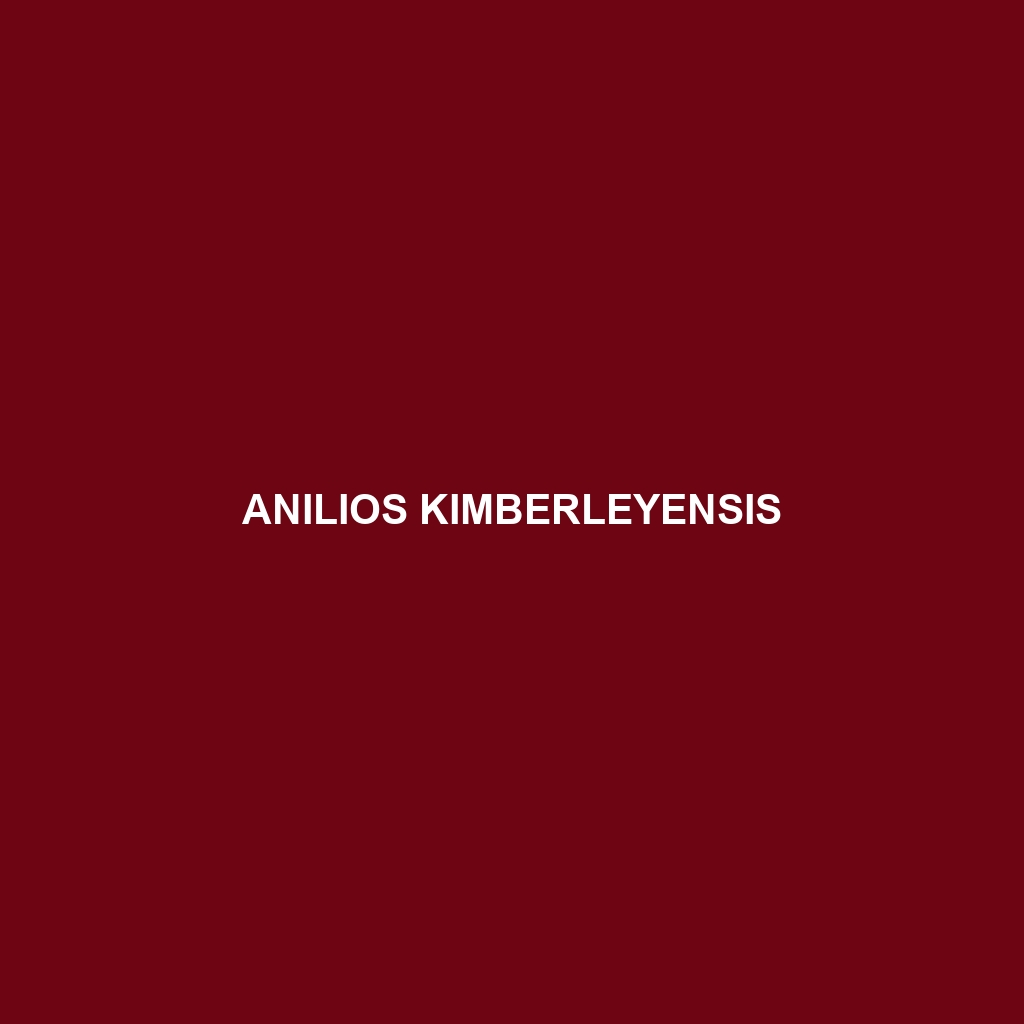Description of Anilios kimberleyensis
Common Name: Anilios kimberleyensis
Scientific Name: Anilios kimberleyensis
Habitat
Anilios kimberleyensis, commonly known as the Kimberley Blind Snake, is primarily found in the arid and semi-arid regions of the Kimberley Plateau in Western Australia. This species typically inhabits sandy soils in woodland areas, often residing in termite mounds and beneath leaf litter, where it enjoys a warm microhabitat conducive to its lifestyle.
Physical Characteristics
This species of snake is notable for its elongated, cylindrical body, which can reach lengths of approximately 30 to 60 centimeters. Anilios kimberleyensis features smooth, shiny scales that exhibit a pale, light brown color with darker banding patterns, allowing it to camouflage effectively with the surrounding substrate. Its small eyes are indicative of its fossorial nature, adapted for life underground.
Behavior
Anilios kimberleyensis is a primarily fossorial species, meaning it spends most of its life underground. Its behavior is characterized by burrowing through the soil in search of food. This snake is generally non-aggressive and will often curl into a ball when threatened. Its nocturnal activity pattern allows it to remain hidden from predators while foraging for food at night.
Diet
The diet of Anilios kimberleyensis mainly consists of small invertebrates, particularly termites and other soft-bodied creatures found in the soil. This snake employs a unique feeding strategy by using its specialized jaw structure to extract prey from within their nests, making it a vital predator of termite populations within its habitat.
Reproduction
Anilios kimberleyensis exhibits oviparous reproduction, laying eggs in the moist soil during the spring months. Females typically lay clutches of two to six eggs, which incubate in the warmth of the earth. Hatchlings emerge several weeks later, showcasing a striking resemblance to adults but in reduced size.
Conservation Status
Currently, Anilios kimberleyensis is categorized as ‘Least Concern’ on the IUCN Red List. However, habitat destruction and climate change pose potential future threats to its populations. Continuous monitoring is encouraged to ensure that this species does not become endangered.
Interesting Facts
One fascinating aspect of the Kimberley Blind Snake is its highly specialized diet, focusing on termites, which few other snake species actively target. Additionally, this species is part of the unique and diverse fauna of Australia’s Kimberley region, reflecting the ecological significance of its habitat.
Role in Ecosystem
Anilios kimberleyensis plays a crucial role in its ecosystem as a predator of termites, helping to maintain the population balance of these insects. Additionally, as a burrowing snake, it contributes to soil aeration, promoting healthier soil conditions for plant growth. Its interactions with other species, including mutualistic relationships with flora and fauna, underscore its ecological significance in the Kimberley region.
